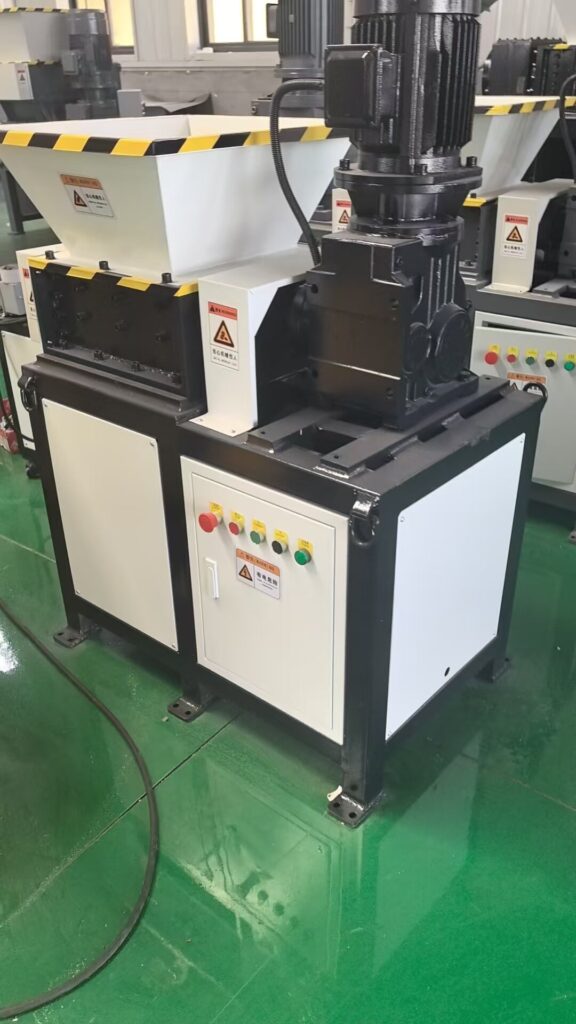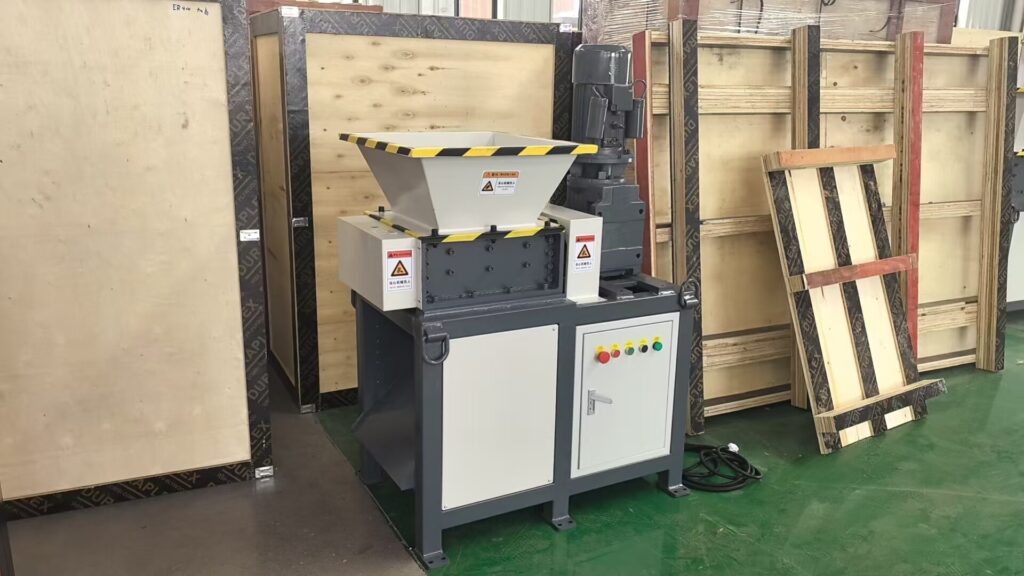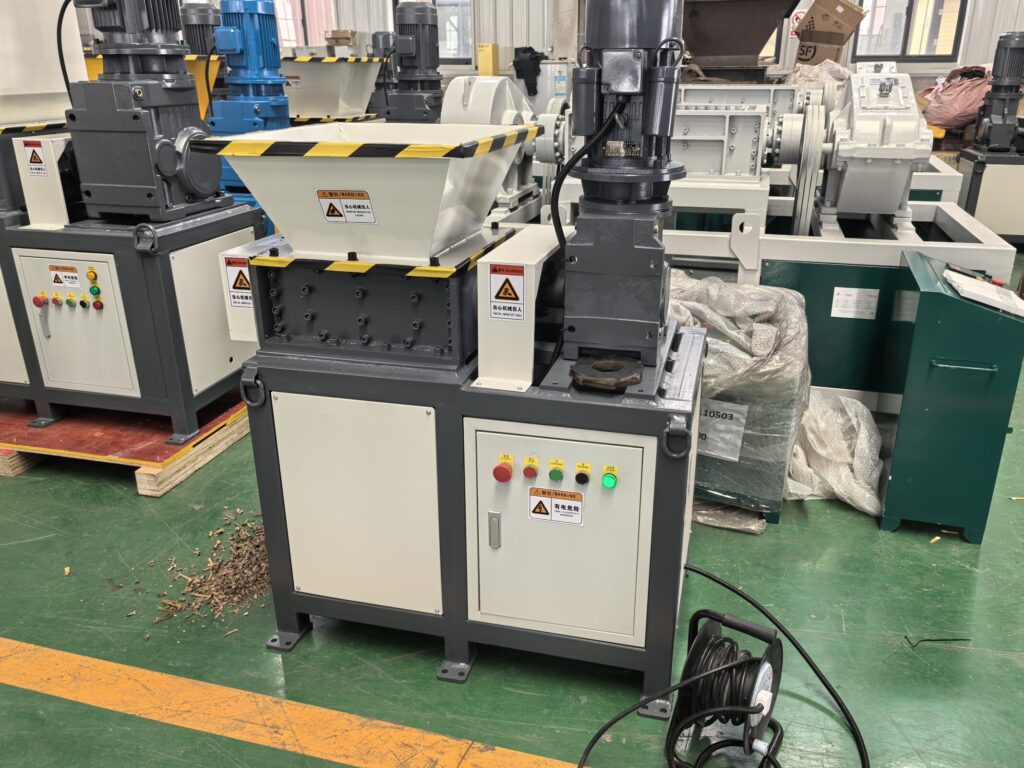What is a Mini Shredder?

A small shredder, also known as a compact or mini shredder, is a versatile machine designed to destroy paper, documents, credit cards, CDs, and even certain types of plastic or light metals, depending on the model. Unlike large industrial shredders, small shredders are portable, space-saving, and ideal for personal or light commercial use. They come in various types, including strip-cut, cross-cut, and micro-cut, each offering different levels of security. Strip-cut shredders slice paper into long strips, while cross-cut and micro-cut models provide higher security by turning documents into confetti-like pieces. These machines are essential for protecting sensitive information, reducing clutter, and even recycling materials. Small shredders are commonly used in homes, small offices, banks, and schools to ensure data privacy and comply with disposal regulations. Key features to consider when choosing a small shredder include sheet capacity, run time, bin size, noise level, and safety mechanisms like auto-stop sensors. Whether you need basic document destruction or high-security shredding, understanding the different types of small shredders will help you select the best one for your needs. Investing in a reliable small shredder not only safeguards your confidential data but also contributes to environmental sustainability by promoting proper waste disposal and recycling.
Why Use a Mini Shredder?

A small shredder is an essential tool for individuals and businesses looking to enhance security, improve organization, and promote eco-friendly waste management. Unlike bulky industrial shredders, compact shredders are designed for convenience, portability, and everyday use, making them ideal for homes, small offices, and even light industrial applications. One of the primary reasons to use a small shredder is data protection—shredding sensitive documents, credit cards, and storage devices like CDs or USB drives prevents identity theft, fraud, and corporate espionage. Many industries, including healthcare, finance, and legal sectors, require secure document disposal to comply with privacy laws such as GDPR, HIPAA, or FACTA, and a small shredder ensures compliance without the need for expensive outsourcing. Beyond security, small shredders help reduce clutter by efficiently disposing of old bills, junk mail, and unnecessary paperwork, freeing up space and improving productivity. They also contribute to environmental sustainability by breaking down paper waste into manageable pieces for easier recycling, reducing landfill contributions, and supporting green office initiatives. Modern small shredders come with advanced features like auto-feed technology, jam prevention, and energy-saving modes, making them user-friendly and cost-effective. For businesses, investing in a compact shredder means lower operational costs compared to professional shredding services, while homeowners benefit from added privacy and convenience. Additionally, some small shredders can handle materials beyond paper, such as plastic cards, staples, and even thin metals, expanding their utility. Whether for personal use, small-scale commercial needs, or specialized industries, a small shredder is a practical, efficient, and secure solution for managing waste and protecting sensitive information. By understanding its advantages—enhanced security, space efficiency, cost savings, and environmental benefits—it’s clear why a small shredder is a smart investment for anyone looking to streamline document disposal while maintaining safety and sustainability.
How to Use a Mini Shredder?

Using a small shredder correctly is essential for both safety and machine longevity while ensuring effective document destruction. First, always check your shredder’s specifications – most home/office models handle 5-10 sheets of paper per pass, with higher-end units processing credit cards or CDs. Prepare materials by removing all staples, paperclips and binders which can damage cutting blades. For optimal performance, feed papers straight in evenly without overloading – forcing too many sheets may cause jams or motor burnout. Most modern shredders feature automatic start/stop sensors, but manual models require pressing the reverse button if jammed (never use hands to clear jams while powered on). Regular maintenance like oiling the blades monthly (using shredder oil or a lightly oiled sheet) prevents overheating and extends lifespan. Always empty the waste bin before it overflows to avoid mechanical strain, and position your shredder in a well-ventilated area since continuous operation generates heat. For security purposes, schedule shredding sessions rather than single-sheet destruction to make reconstruction harder. Different materials require specific handling – shred CDs vertically to prevent slippage, and only process credit cards in designated slots if your model supports it. Environmentally, shredded paper makes excellent packing material or compost when mixed with greens. Common troubleshooting includes unplugging for 30 minutes if overheated, using the reverse function for minor jams, and never attempting blade sharpening yourself. For maximum security, pair your shredder with a locked collection bin and establish a regular shredding routine for sensitive documents. By following these professional practices, your small shredder will deliver years of reliable, secure service while protecting both your privacy and the machine’s functionality. Remember that proper usage not only safeguards information but also reduces repair costs and ensures smooth operation when you need it most.
